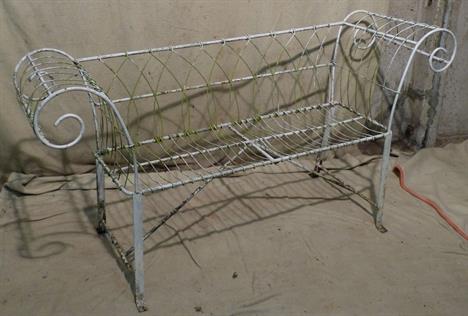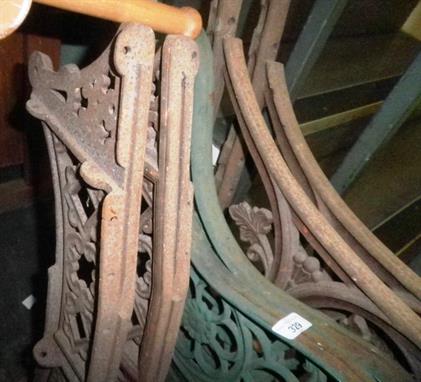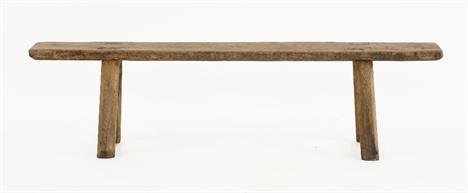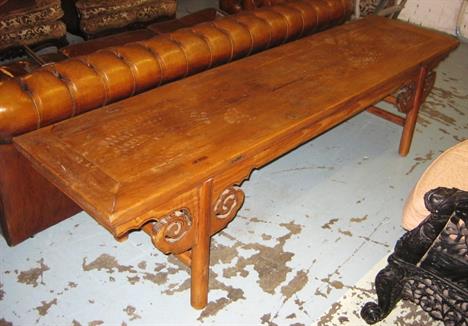We found 59216 price guide item(s) matching your search
There are 59216 lots that match your search criteria. Subscribe now to get instant access to the full price guide service.
Click here to subscribe- List
- Grid
-
59216 item(s)/page
SERBAN SAVU (né en 1978) TAXI, 2013 Huile sur toile Signée, titrée et datée au dos Oil on canvas Signed, titled and dated on the reverse 134 x 190 cm - 523/4 x 743/4 in. “Taxi” a été conçu pour être lu par le spectateur dans le sens des aiguilles d’une montre, en partant du pantalon rouge de la femme assise sur le banc, exprimant ainsi le temps qui passe. Il y a deux histoires, deux couples dans leur quarantaine, l’un travaille l’autre se repose, mais chacun passe sa vie dans son propre monde. L’élément narratif de cette peinture vient du taxi qui symbolise l’avenir inconnu. The painting “Taxi” was conceived to be read by the viewer clockwise, starting from the red trousers of the lady resting on the bench, meaning the passing of time. There are two stories about couple relations representing people in their mid life, at work and leisure, spending their life inside their private cell. The intriguing element of this painting is the taxi which symbolizes the unknown destination of the future.
Important Miguel Arroyo, Venezuela (1920-2004) Circa 1956 Slat Bench with Ebony Lacquer "Banco Listonado" Manufactured by Pedro Santana, Carpintería Colectiva ¿ Caracas, Venezuela. Unsigned. Provenance: This Bench was included in: Embracing Modernity: Venezuelan Geometric Abstraction, The Patricia & Phillip Frost Art Museum, Miami, Florida October 13, 2010–January 2, 2011. "Embracing Modernity: Venezuelan Geometric Abstraction presents a historical overview of the origins of Venezuela’s abstract movement focusing on its early developments dating from the late 1940’s, to the 1970’s. It includes works by artists who were responsible for the growth of the movement at the national and international level, particularly in Paris where many of them resided at the time. The show, curated by Maria Carlota Perez and Francine Birbragher-Rozencwaig, features a selection of works from private collections and Foundations which document an important period of Venezuela’s art history which was instrumental in the development of Modern Art in the Americas. Paintings, sculptures and installations illustrate the development of Venezuelan Geometric Abstraction and Kinetic Art, and introduce many artists who contributed to the movement in Venezuela, unknown to the American public." The bench is pictured in the catalog for the show. Restoration Otherwise Good Condition. Measures 18-1/8 Inches Tall, 70-7/8 Inches Long and 14-1/4 Inches Deep. We will not ship this item because in our opinion it needs to be crated. We will happily recommend a list of outside vendors upon request. (estimate $12,000-$15,000) Starting Price: $6,000.00
A quantity of farmyard figures and accessories, comprising approximately one hundred animals, birds and people, some marked Britains, trees and fences, lawn mower and roller, wells, beehive, feeding troughs, wagons, bench seats, etc, a painted wooden farmyard and a quantity of similar plastic figures
LEROY NEIMAN [AMERICAN 1921-2012], WATERCOLOR, MARKER, PEN ON PAPER, 1966, H 15", W 17",: "Chicago Black Hawks bench"; 15 1/2" x 17 3/4" paper; signed, dated `March 66` and annotated "Mikita 2 hours a year in penalty box". Floated in frame. Provenance: Oehlschlaeger Galleries, Chicago; Jo Ann Perse Gallery, St. Louis; Mr. Loiterstein, St. Louis. Photocopy of a London Arts, Detroit, MI, 6-10-1994 insurance appraisal in customer file.
A George II mahogany hall bench, c.1730, the design attributed to William Kent, with a double-panelled back, a scrolled top and arm terminals above a double arched acanthus leaf carved apron, foliate carved legs and scrolled feet, 140cm wide 60cm deep 101cm high Provenance: Purchased from Christopher Gibbs in the late 1970s. Benches of this type, conceived in an architectural manner and intended to stand in formal entrance halls, are associated with the English Palladian Revival of the late 1720s and 1730s, and in particular with houses where the architect/designer William Kent worked. Some are of painted deal or oak, but most surviving examples are mahogany. Mahogany benches have been recorded at Houghton Hall, Boughton House, Badminton House, Devonshire House, Raynham Hall, Wentworth Woodhouse and Sherborne House (Glos.), although some are no longer in situ. While all are of a broadly similar form, the benches differ in style and detail, and probably emanated from more than one workshop. Those made for Sherborne House are attributed to James Moore Jnr., who supplied in 1731 '… 2 Mahogany Settees for ye Dining Room at ye Lodge Carved…' at a cost of £30. Their design is attributed to William Kent, who provided plans for Sherborne Lodge and House in 1728; it was later published in a slightly modified version by John Vardy in 'Some Designs of Mr Inigo Jones and Mr William Kent'. Almost identical benches were once at Devonshire House and a similar set of four benches were made for the Duke of Montagu's house in Whitehall and are now at Boughton House, Northamptonshire. They are closely similar to the Sherborne benches but are attributed, not to Moore, but to his contemporary James Nix. A similar, single bench is on the Great Stairs at Houghton Hall. The present bench has some similarities with the Sherborne and Montagu House examples, specifically in the design of the front legs, but its back and arms relate much more closely to the set of six benches at Houghton Hall, Norfolk, whose design is attributed to William Kent. Indeed, this is the only known example which shares the distinctive scrolled-over back of the Houghton benches. It also has a similar arched, leaf-carved apron below the seat. The apron is carried to the floor at each end, forming scrolled trusses at right angles to the front legs. The result is highly decorative, but also, from a structural point of view, immensely strong. The seat construction, with its single board resting on a coved frame, is identical, as is the design of the scrolled arm terminals. The principal differences are in decorative treatment; the present bench has a highly enriched apron but plain mouldings beneath the seat and around the back and side panels. The similarities are sufficiently compelling as to suggest a common source. No bills survive to reveal the maker of the Houghton benches, but they might have come from the workshop of James Richards, to whom is attributed much of the carved work at Houghton. Richards was appointed in 1721 'Master Sculptor and Carver in Wood' to George I, and he is known to have worked closely with Kent on several commissions. We would like to thank Dr. Adam Bowett for his assistance in cataloguing this lot.
3 Pola-LGB G scale plastic buildings. German style raised signal cabin, ‘Waldkirche’ complete with steps and ‘Martin’ advertising poster to wall and two large windows to each side of ground floor. Plus a ‘wood’ good shed with loading platform to each side, with sliding doors and hinged doors to ends, ‘Waldkirche’. Also the station building for ‘Waldkirche’ complete with food menu and ‘Martini’ poster and bench seat outside. VGC light cleaning required.
-
59216 item(s)/page





























![LEROY NEIMAN [AMERICAN 1921-2012], WATERCOLOR, MARKER, PEN ON PAPER, 1966, H 15", W 17",: "Chicago Black Hawks](http://lot-images.atgmedia.com/SR/33875/2891379/2018-201392320520_468x382.jpg)





























